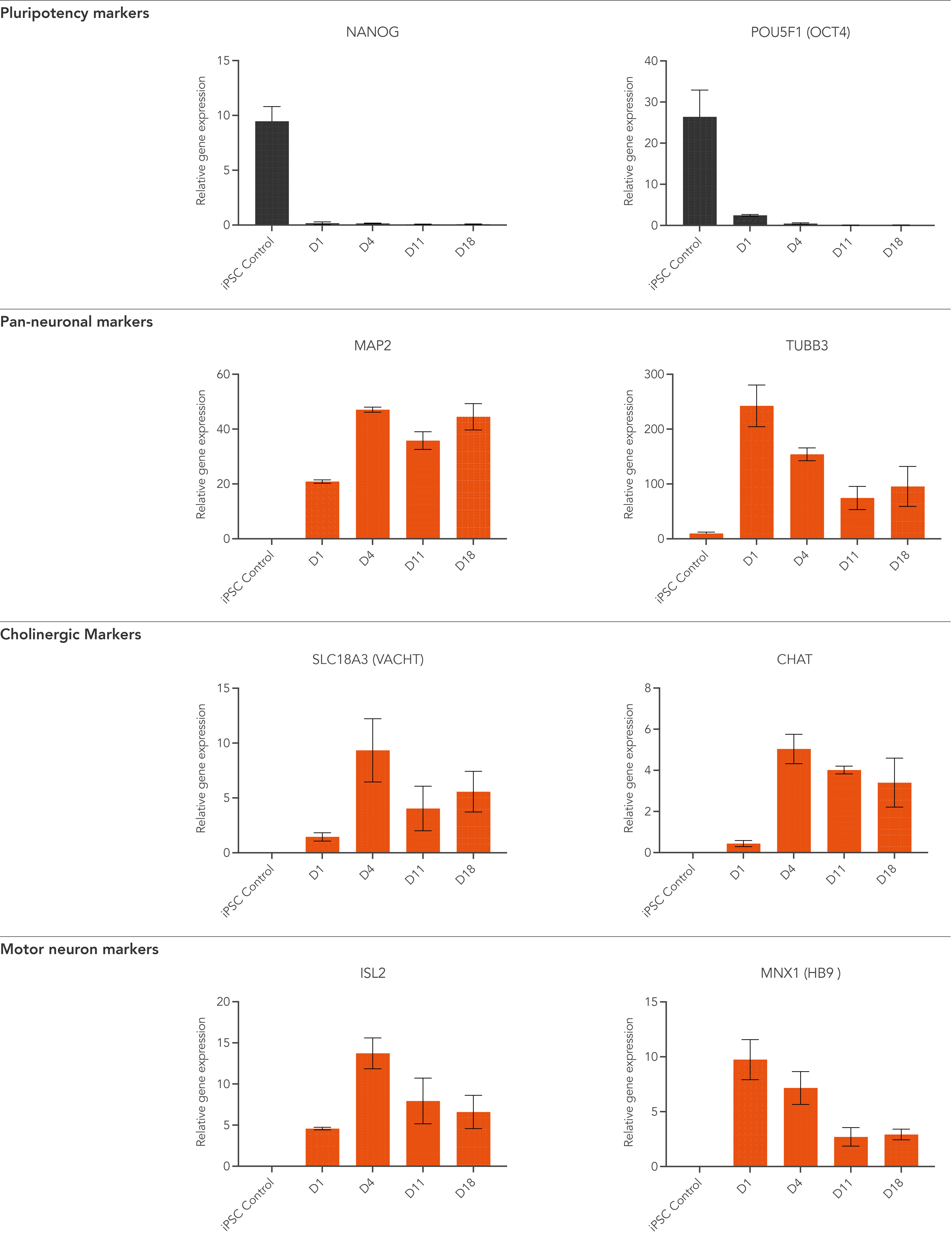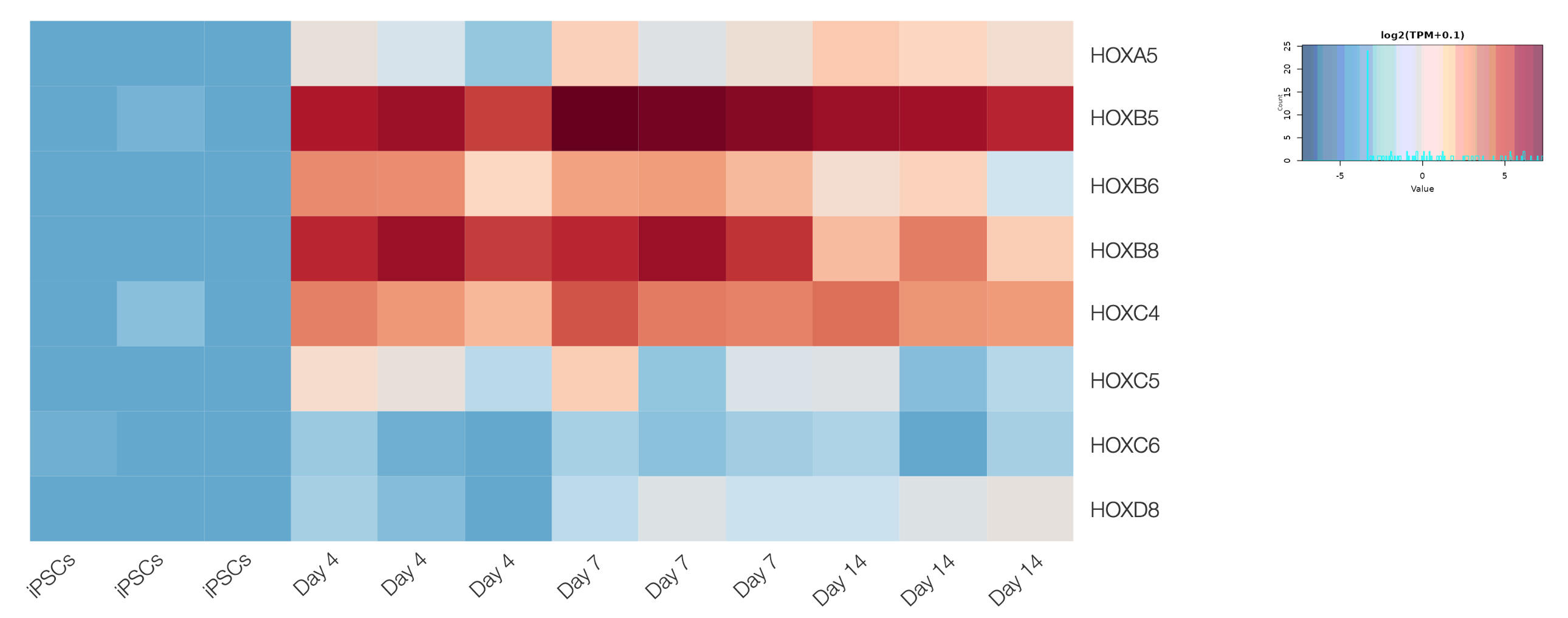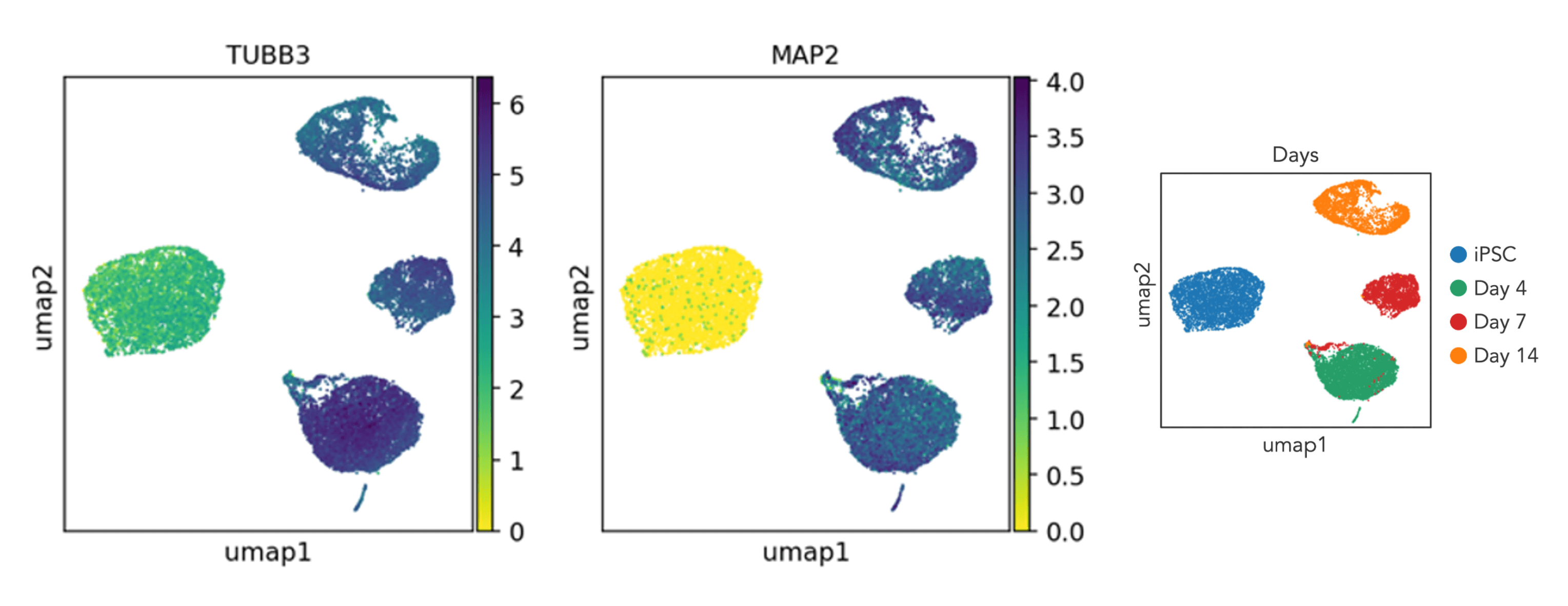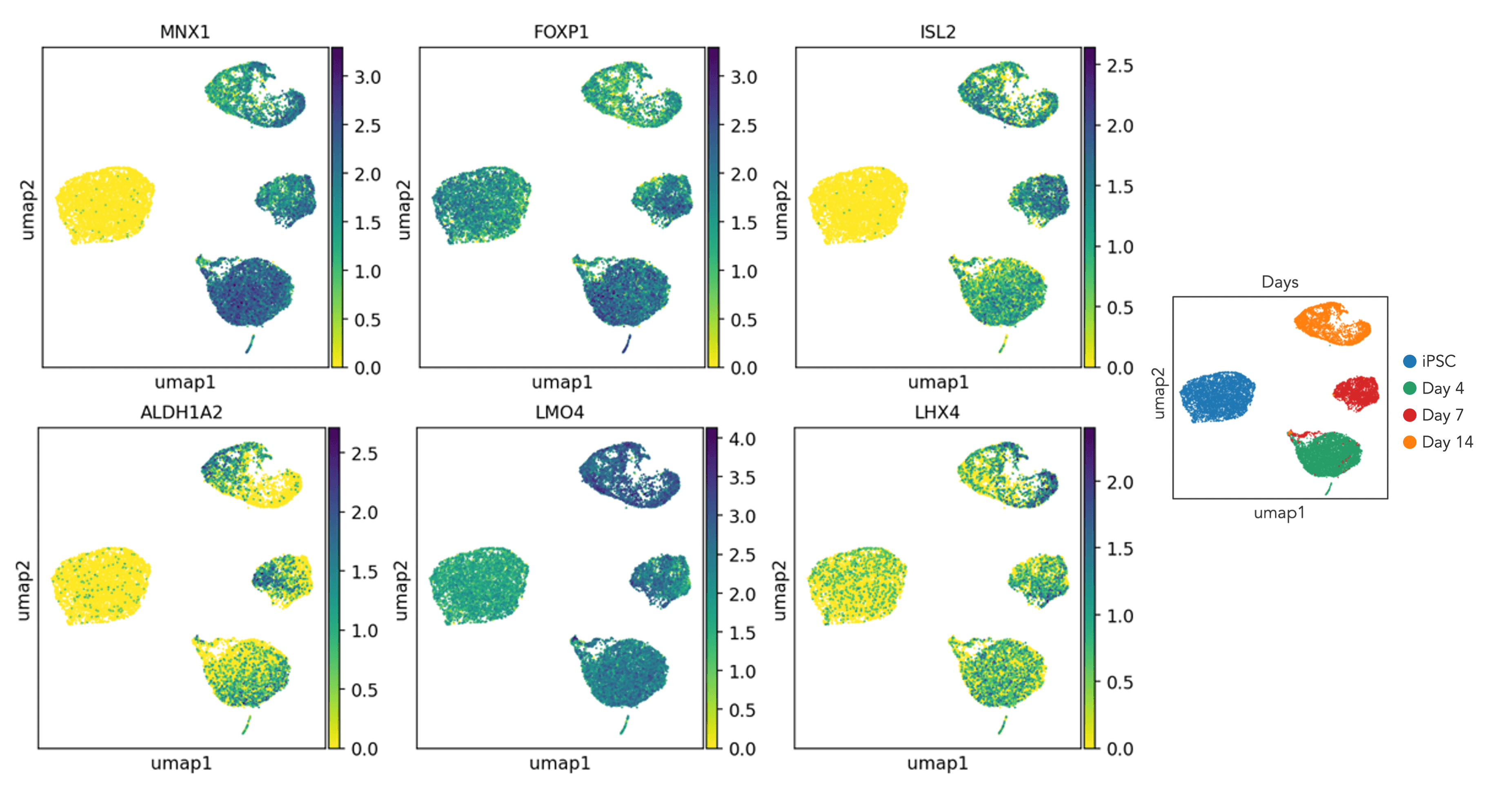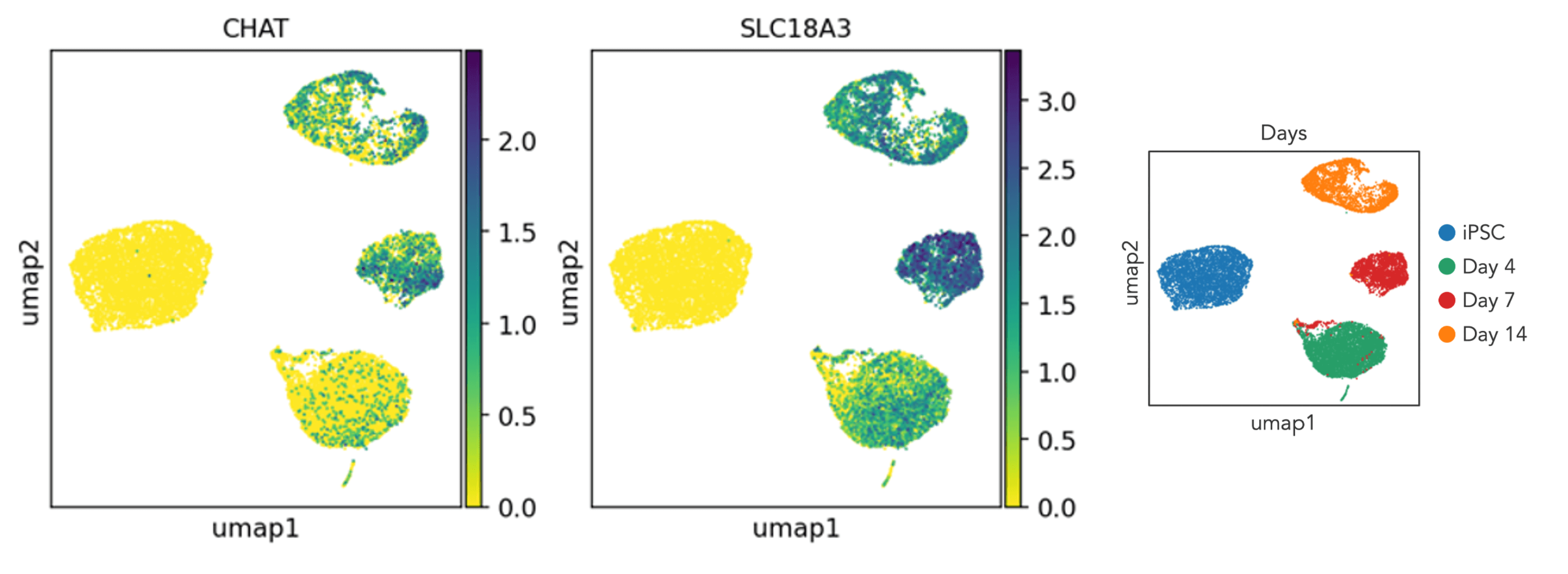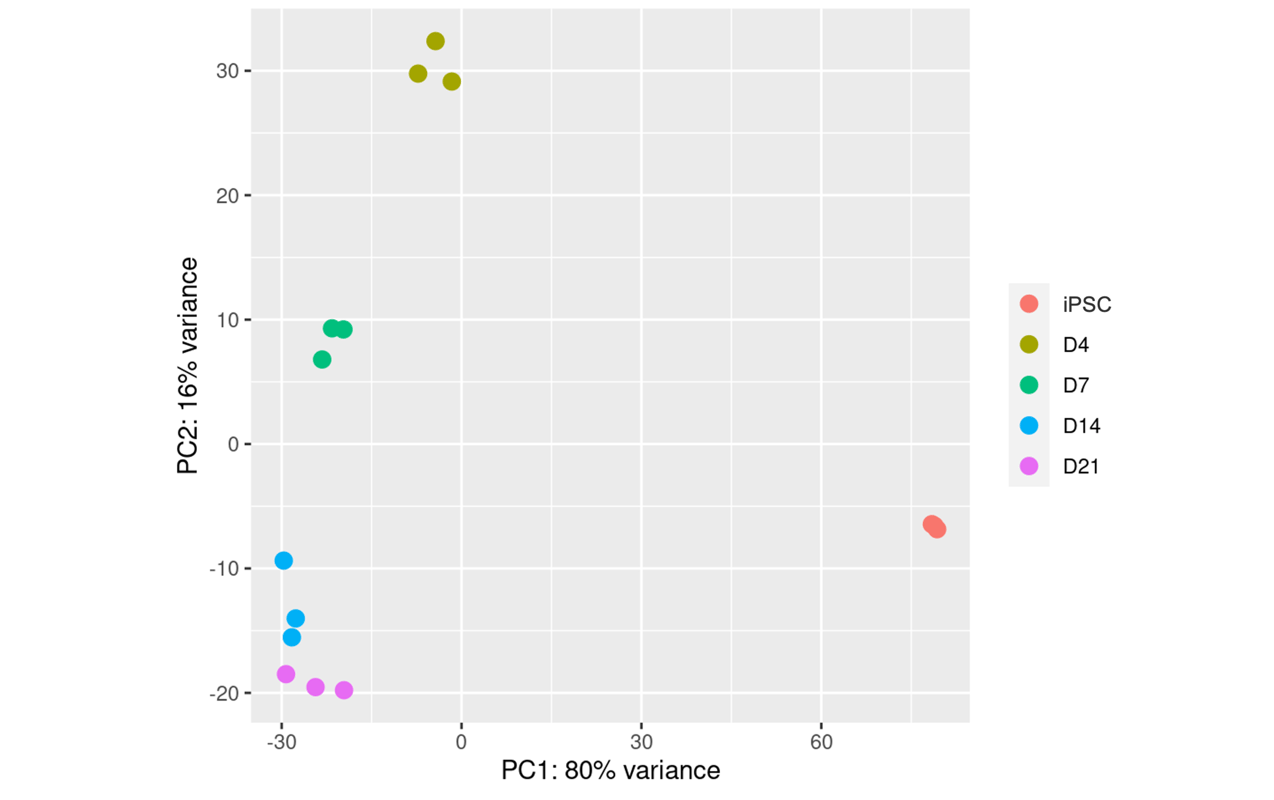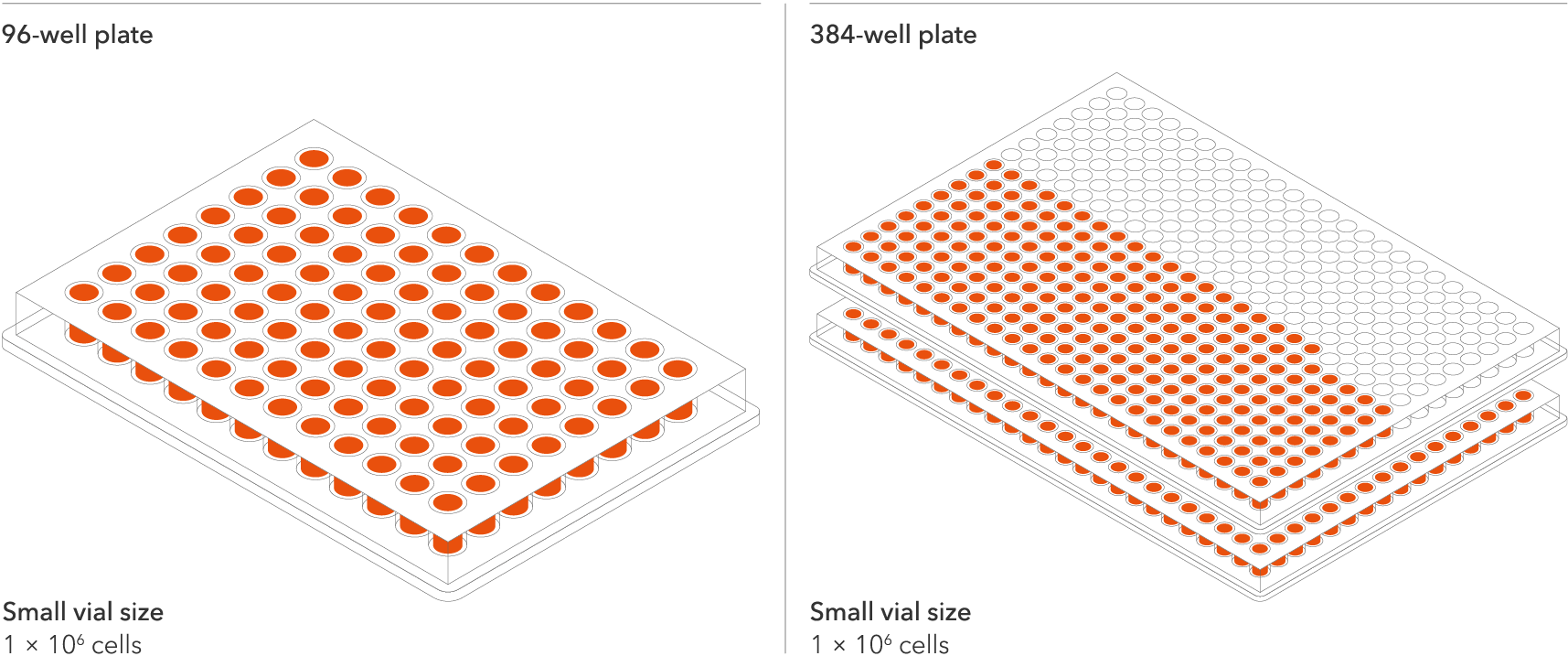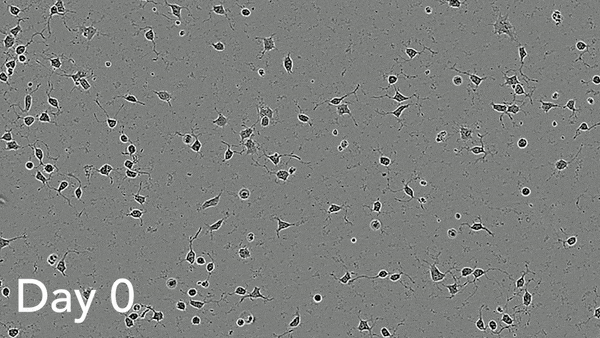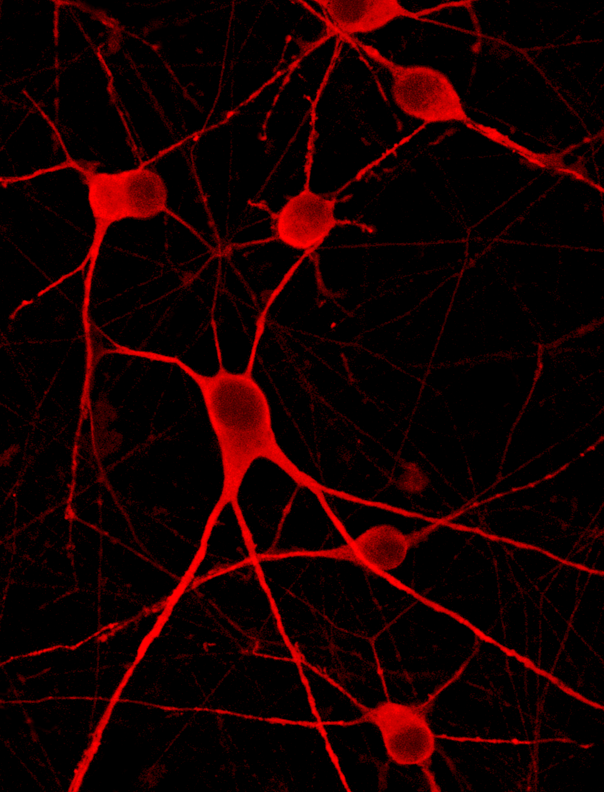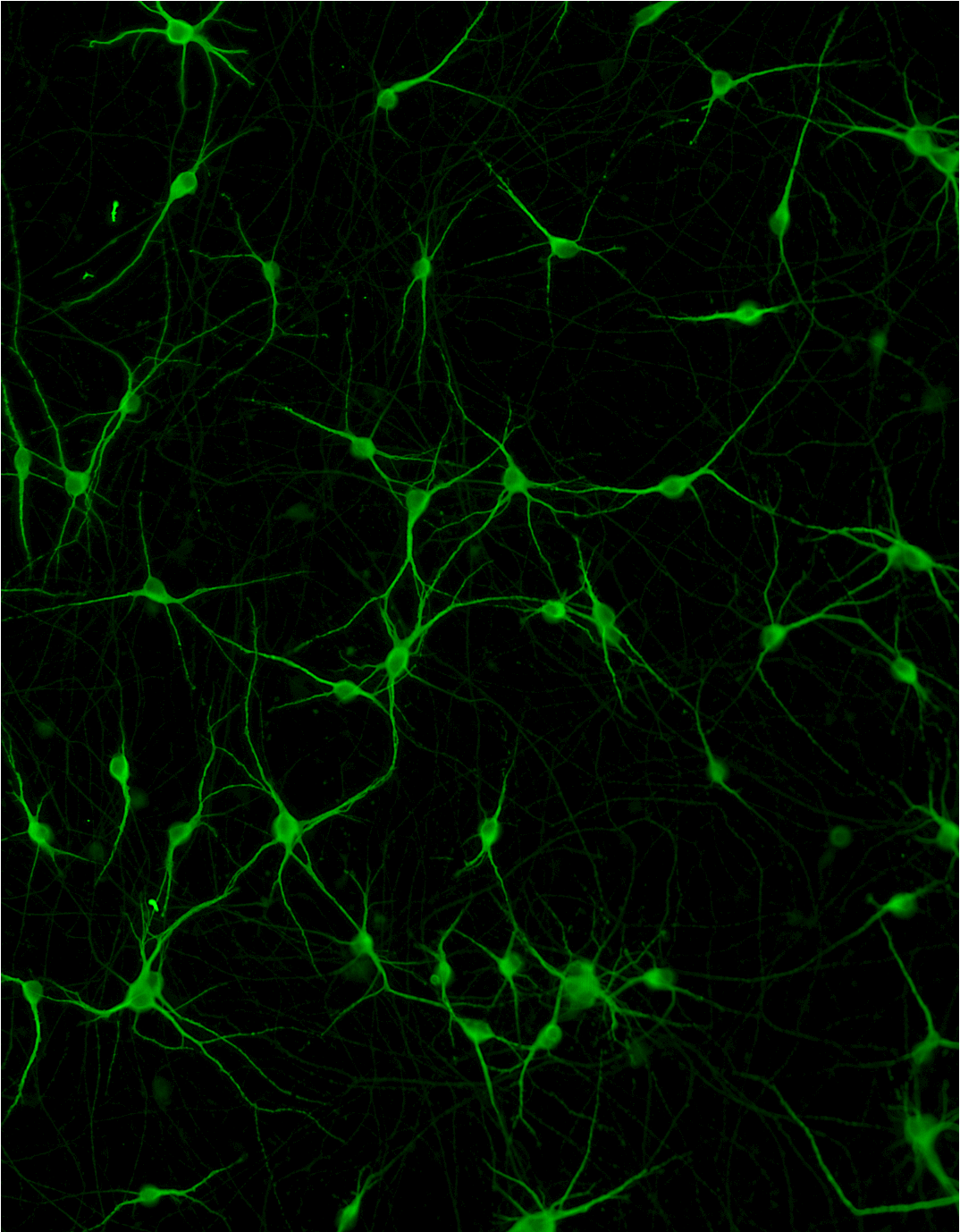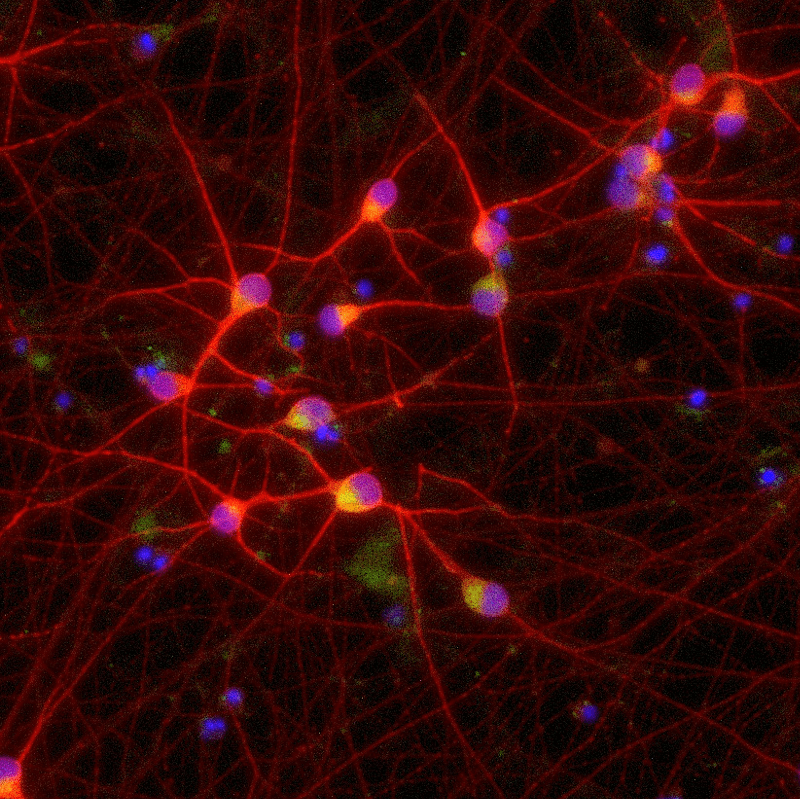ioMotor Neurons from human induced pluripotent stem cells (iPSC) deterministically programmed using opti-ox technology. Within days, cells convert consistently to defined, functional motor neurons, showing the expression of key lower motor neuron marker genes MNX1(HB9), FOXP1, ISL2 and cholinergic markers CHAT & SLC18A3 (VAChT) by day 4.
ioMotor Neurons have been extensively characterised, indicating a spinal motor neuron identity (cervical region) confirmed through FOXP1, ISL2, MNX1 and HOX gene expression that is measurable just 4 days post-revival. From day 14, >80% cells express MNX1 and show functional neuronal activity in astrocyte co-culture that is in line with primary motor neurons cultured in similar conditions. Functional activity was also evaluated in monoculture, demonstrating no significant activity, as expected; indicating that the cells form a highly pure and homogenous neuronal population unable to undertake synaptogenesis without glial cells.
ioMotor Neurons represent an accurate in vitro model of lower motor neurons (indicated spinal – cervical region identity), enabling scientists to build physiological relevance into their experiments at scales from single cell analysis to high content imaging, helping bridge translational gaps in motor neuron disease research and neurotoxicology.
Related disease model cells are available with TDP‑43 M337V, FUS P525L and SOD1 G93A mutations (heterozygous and homozygous) that can be used alongside wild type ioMotor Neurons as a genetically matched control.
Additional disease models are available in ioGlutamatergic Neurons with mutations in TDP‑43 and MAPT, creating a comprehensive toolkit to study the genetic and pathological overlap between ALS and FTD.
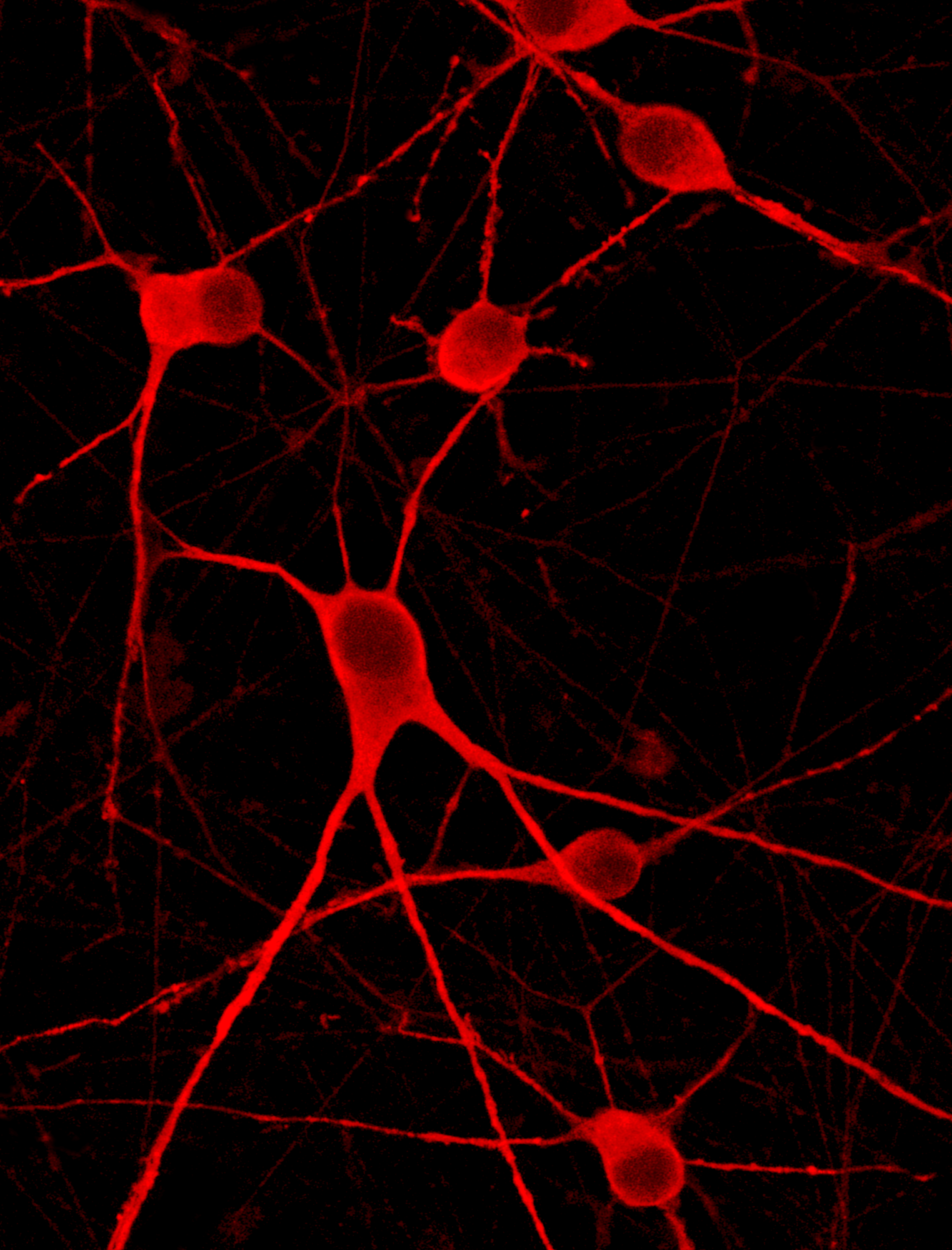




.png?width=836&height=500&name=image%20(4).png)


